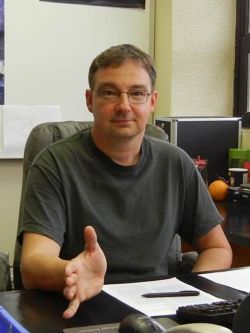Event Date/Time
Location
Please contact the department for the zoom information.
Series/Event Type
For decades, polycyclic aromatic hydrocarbons (PAHs) – organic molecules containing fused benzene rings - have been invoked in fundamental molecular mass growth processes leading eventually to carbonaceous nanostructures in the interstellar medium (grains) and in combustion processes (soot). However, the elementary steps involved in low- and high-temperature growth mechanisms of these aromatics have remained essentially elusive until recently. Extracted from gas phase molecular beam studies on the molecular level combined with isomer-selective photoionization mass spectrometry and electronic structure calculations, this talk presents a novel mechanistical framework on key elementary reaction mechanisms synthesizing aromatic molecules in extreme environments. These versatile findings are translated from the interstellar medium to combustion systems and to two- and three-dimensional carbonaceous nanostructures such as graphenes, chiral helicenes, nano bowls, and fullerenes. Facile low-temperature routes to complex aromatics signify a fundamental shift in the perception that PAHs can be only formed at high-temperature combustion and circumstellar conditions on electronic ground state surfaces with novel mechanisms comprising excited state dynamics, submerged barriers, and unconventional concerted reactions between aromatic radicals. An outlook is also presented on the synthesis of PAHs in low temperature, hydrocarbon-dominated solids upon interaction with (non)-ionizing radiation driven predominantly by non-adiabatic dynamics to PAHs as complex as coronene. Potential future works involving condensed phase ultrafast spectroscopies and the exploration of growth processes on surfaces of carbonaceous particles levitated in ultrasonic fields and radiofrequency multipole traps are highlighted to ultimately shed light on the aromatic universe we live in.
Speaker Bio
